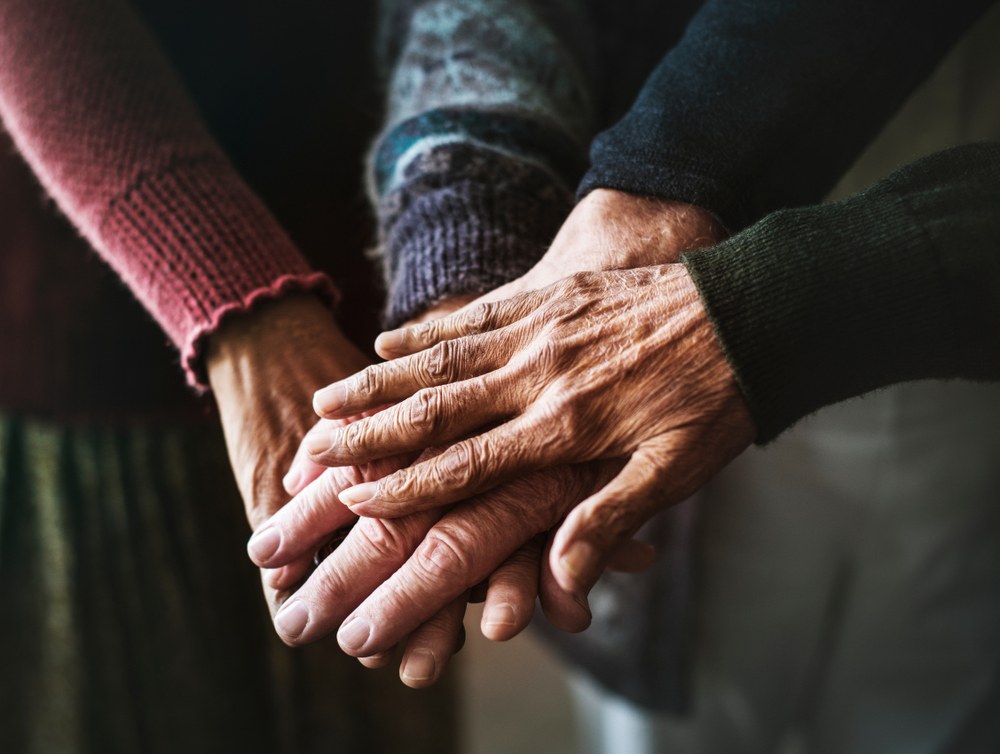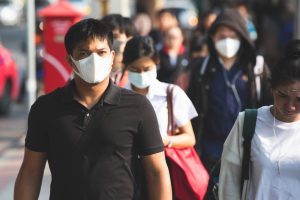Unveiling the Centenarian Lifestyle: Pathway to the Fountain of Youth
Across the world, pockets of centenarians seem to harbour a shared secret to longevity, and this secret lies in the nuances of their daily dietary practices.
Moreover, a noticeable trend among the elderly in blue zones provides us with compelling insights on how to lead a healthier, longer life. By studying and adopting these dietary habits, we can strive to improve our overall well-being and increase our chances of living a vibrant life well into old age.
A Deep Dive into the Habits of the Oldest Old
Longevity is not merely about survival; rather, it is about living a healthy, vibrant life for as long as possible.
In pursuit of this goal, researchers have identified special geographic regions known as “blue zones,” where individuals reportedly live longer than the global average. These blue zones offer valuable insights into the factors contributing to a longer and healthier life. Among the identified blue zones are:
- Okinawa, Japan
- Sardinia, Italy
- Nicoya, Costa Rica
- Icaria, Greece
- Loma Linda, California, United States.
What Can We Learn From Blue Zones?
The term “blue zones” was conceived during demographic research conducted by Gianni Pes and Michel Poulain, first presented in their 2004 publication. Their analysis pinpointed Sardinia’s Nuoro province as the locale with the highest concentration of male centenarians, thereby earning the designation of a “blue zone”.
Building on this demographic work, Dan Buettner proposed the four additional locations.
Dan Buettner is an internationally recognised explorer, journalist, and author, best known for his work on “blue zones.” As a National Geographic Fellow and award-winning journalist, Buettner’s work has taken him around the world in pursuit of the secrets to longevity and happiness.
His research has built upon foundational demographic research to identify additional blue zones and is pivotal in popularising the term and the lifestyle strategies it embodies.
These blue zones share nine common characteristics:
Physical activity:
Centenarians in blue zones engage in regular physical activity, often manual labour. For example, Sardinian shepherds often cover over 8 kilometres a day on foot.
Purpose:
Okinawans refer to this as “ikigai” and Nicoyans call it “plan de vida”; both phrases encapsulate the concept of having a reason to rise each morning. This sense of purpose fuels life satisfaction, potentially leading to an extended and happier life.
Sleep:
In blue zones, people prioritise rest and sleep. For example, Ikarians are known for taking afternoon siestas, and the Loma Linda community observes a weekly Sabbath, dedicating a day to rest and worship.
The 80% rule:
Inhabitants of blue zones tend not to overeat, following an old Okinawan mantra that suggests one should stop eating when 80% full.
Plant-based diet:
The majority of food consumed by blue zone centenarians is plant-based.
Moderate alcohol consumption:
Moderate alcohol consumption may contribute to the extended lifespan of some blue zone inhabitants.
Community bonds:
Buettner asserts that strong community ties can foster longevity. For instance, Okinawans are known to establish supportive social networks offering financial and emotional assistance.
Family first:
Close-knit family relationships are a hallmark of blue zone communities. An example can be found in the Seventh Day Adventist community, where ageing parents are cared for by their children.
Social reinforcement:
Healthy behaviours are encouraged within blue zone social networks, making adherence to a healthy lifestyle more achievable, as per Buettner’s suggestions.
The Okinawan Secrets to Longevity: Nourishing Body, Mind, and Soul
Japan boasts the highest rate of centenarians in the world, with 0.06% of its population aged 100 or older. Remarkably, the key to this longevity lies in the enchanting islands of Okinawa, where life expectancy far surpasses the global average. This can be attributed to a combination of factors, such as the subtropical marine climate, diverse natural environment, and a unique approach to food and mindset, all of which contribute to nurturing the well-being of Okinawans.
Moreover, the dietary practices of Okinawans play a pivotal role in their extended lifespans. With a focus on nourishing superfoods and a harmonious balance of nutrients, Okinawan cuisine sets an exemplary standard for healthy eating. In addition to their wholesome diet, Okinawans also prioritise rest and relaxation, following the cultural tradition of afternoon siestas.
By understanding and embracing the secrets of longevity found in Okinawa, we can gain valuable insights and adopt positive lifestyle changes that may lead to a healthier, more vibrant life for ourselves and future generations.
Okinawan Cuisine: The Path to Longevity
For Okinawans, food is not just a means of sustenance; it is a way of caring for both body and soul. Their philosophy of “nuchigusui,” or “medicine of life,” extends to cuisine and life in general, highlighting the profound connection between food and overall well-being. In fact, Okinawans consider food as “kusunaibitan” or “medicine,” emphasising its crucial impact on the body and health.
One of the defining features of Okinawan cuisine is its simplicity and emphasis on nutritional balance. By incorporating a wide variety of locally sourced, nourishing superfoods, Okinawans maintain a diet that is rich in essential nutrients. Their culinary traditions revolve around using fresh, seasonal ingredients, which contribute to the exceptional health benefits associated with their way of eating.
The profound respect for food and its role in fostering good health is further reflected in Okinawans’ mindful eating practices. Eating slowly and savouring each bite allows for better digestion and absorption of nutrients, ensuring that the body receives the full benefits of their nutrient-dense meals.
Through the profound understanding and application of these dietary principles, Okinawans have unlocked the secrets to a longer, healthier life. By adopting their holistic approach to food and nutrition, we can make positive changes in our own lives, promoting overall well-being and vitality.
Superfoods: The Nutrient-Rich Wonders of Okinawa
An array of superfoods enriches Okinawan cuisine, offering natural or processed ingredients that provide exceptional health benefits.
Bitter melon, or goya, contains vitamin C, beta-carotene, iron, and potassium, and is a star ingredient in goya champuru.
Mozuku seaweed, native to Okinawa’s waters, offers abundant fucoidans with numerous health benefits. Shikuwasa, an Okinawan citrus fruit, is rich in citric acid and polyphenols, known for their antioxidant properties.
Sugarcane, the region’s primary crop, yields calcium and minerals, while turmeric, a spice, contains curcumin for liver health.
The Okinawan Mindset: A Recipe for Mental Well-being
Beyond the nutritious diet, the Okinawan mindset plays a pivotal role in their long and healthy lives. Stress seems less prevalent on the islands due to their community-oriented approach.
Expressions like “nankuru nai sa” (“things will work out somehow”) alleviate stress in challenging situations. The term “uchinaa time” reflects their relaxed pace of life compared to Japan’s punctuality. “Yuimaru,” emphasising mutual aid, fosters strong community bonds, embodied by the concept of “Ichariba-chodee,” forming lifelong connections with others.
The captivating exploration of centenarian cuisine in the blue zones offers us valuable insights into the art of living a longer, healthier life.
By embracing the lessons from places like Okinawa, Japan, where individuals intertwine the secrets of longevity with a harmonious balance of nourishing foods and a positive mindset, we can strive to cultivate our own “blue zone” within our lives.
References
- Identification of a geographic area characterized by extreme longevity in the Sardinia island: the AKEA study – PubMed. (2004, September 1). PubMed. https://doi.org/10.1016/j.exger.2004.06.016
- Association of Healthy Lifestyle With Years Lived Without Major Chronic Diseases – PubMed. (2020, May 1). PubMed. https://doi.org/10.1001/jamainternmed.2020.0618
- History of Blue Zones – Blue Zones. (n.d.). Blue Zones. https://www.bluezones.com/about/history/
- The Secret of Okinawan Longevity | VISIT OKINAWA JAPAN | Official Okinawa Travel Guide. (n.d.). VISIT OKINAWA JAPAN | Official Okinawa Travel Guide. https://visitokinawajapan.com/discover/food-and-longevity/okinawan-longevity/
- There are now more than half a million people aged 100 or older around the world. (n.d.). World Economic Forum. https://www.weforum.org/agenda/2021/02/living-to-one-hundred-life-expectancy/












